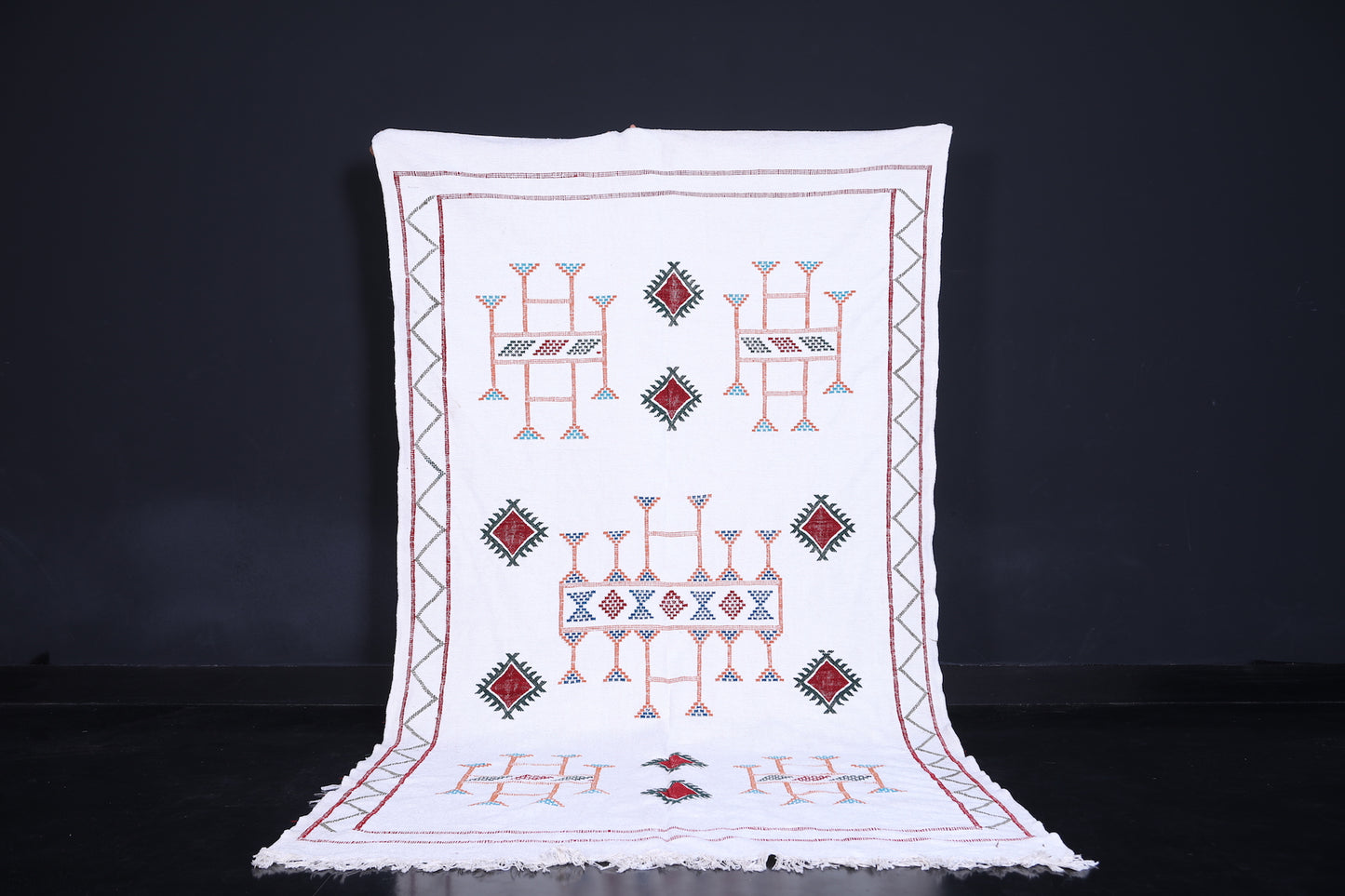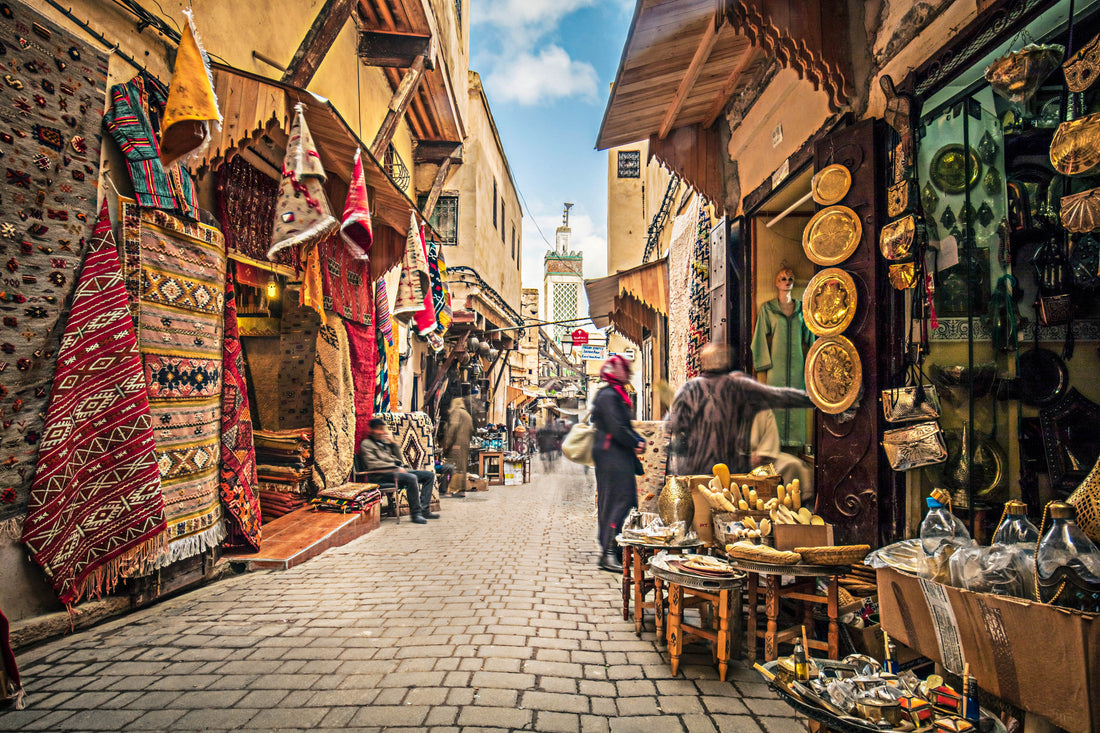The Art of Weaving: A Cultural Legacy Preserved in Moroccan Rugs
Have you ever questioned approximately the tales in the back of the tricky patterns and vibrant hues of Moroccan rugs? These works of art reflect the wealthy cultural background of Morocco.For centuries, weaving has been an vital part of Moroccan tradition, passed down thru generations of skilled artisans.The diverse landscapes and nomadic tribes of Morocco are pondered within the eclectic designs and styles of its famed rugs. Each rug is an adventure into Morocco’s beyond, depicting symbols of fertility, nature, and spirituality.
The undying splendor of Moroccan rugs is a testomony to the artistry and ability required to handcraft these textiles. From the spinning of wool and dyeing of yarn to the finished product, every step is finished through hand the use of strategies that have endured for a long time. Marvel at the geometry, symmetry, and colorings of those rugs and also you’ll advantage an appreciation for the cultural legacy preserved in each thread. Moroccan rugs provide a window into the soul of a kingdom and its human beings.
The Rich History of Weaving in Morocco
Weaving has been an indispensable part of Moroccan culture for centuries. Berber tribes added the craft with them when they migrated from the Middle East, and it flourished beneath the Almoravid dynasty within the 11th century. Over time, exclusive Moroccan patterns and patterns emerged, prompted through the Berbers in addition to later Arab conquests.
Today, Moroccan rugs are famed for their high-quality and splendor. Three of the maximum famous weaving centers are the High Atlas Mountains, Middle Atlas Mountains, and the Rif Mountains. In these regions, households were weaving rugs for generations the use of age-old techniques and styles.
The rug-making manner is complex and time-consuming. First, wool is hand-spun into yarn and dyed the usage of herbal pigments like indigo to produce vibrant colorations. Then, the yarn is hand-knotted onto a loom to create the pile. Some rugs function as much as one hundred fifty knots in step with square inch! Finally, the completed rug undergoes a grooming method to decorate the colours and sheen.
From begin to complete, a unmarried rug can soak up to a 12 months to produce and involves the whole family. Mothers spin the wool, daughters assist with the dyeing, and fathers and sons assemble and knot the looms. Each region has distinct styles, hues and knotting patterns which might be passed down through the generations.
Owning a hand-crafted Moroccan rug method possessing a piece of records and lifestyle. Every rug tells a story through its problematic design and amazing colours. With care, a rug can last a lifetime and past, a testimony to the skill and artistry of Morocco’s weavers. Their cultural legacy lives on in every and every rug.
 Traditional Weaving Techniques Used in Moroccan Rugs
Traditional Weaving Techniques Used in Moroccan Rugs
The art of weaving Moroccan rugs has been passed down through generations. These colorful creations are made using techniques that have been preserved for centuries.
-
The wool used comes from local sheep and is handspun into yarn. The yarn is then dyed vibrant colors using natural plant dyes like indigo, saffron, and henna.
-
The weaving is done on horizontal looms, with the pattern formed by tying off sections of warp yarns. The weft yarns are then woven over and under the warps. Knots are tied off at the end of each colored section.
-
The most well-known weaving technique is the Berber knot. This knot results in the signature bumpy, textured pile. The Berber knot is tied individually around each warp thread, with each knot containing three wool threads.
-
Another common technique is the Ghiordes knot, which produces a flatter, denser pile. This knot wraps around four warp threads at a time. Ghiordes rugs often feature intricate curvilinear and botanical patterns.
The time and skill required to handcraft these rugs results in pieces that are truly artistic beauties. Each rug contains thousands of hand-tied knots, with the most complex designs having up to 1,000 knots per square inch. It's no wonder these vibrant creations have been treasured for generations. The art of Moroccan rug weaving is an integral part of the country's cultural heritage that continues to inspire wonder and awe.
Natural Dyes: Creating Vibrant Colors That Stand the Test of Time
The natural dyes used in Moroccan rugs have been perfected over centuries, creating vibrant colors that stand the test of time.
Extraction from Plants and Minerals
The colors in Moroccan rugs come from all-natural plant, insect, and mineral dyes that must be properly extracted and fixed. Some of the common sources include:
-
Henna for orange and red hues
-
Indigo for blue shades
-
Turmeric for yellow tones
-
Cochineal insects for deep crimson reds
-
Iron-rich red clay for browns
To extract the dyes, the source materials are ground up and boiled in water. Mordants, like alum or iron, are added to help the dyes bind to the wool fibers. The yarns are submerged in the dye baths and left to soak until they reach the desired shade.
Unique, Fading Beauty
The natural dyes produce rich, distinctive colors that fade over time. Originally intense oranges and reds will mellow into rusty, earthy tones. Bright yellows and greens soften to muted olive shades. Far from a flaw, this gradual fading is seen as enhancing the rug's beauty and character. Natural dyes also create subtle variations in hue across the rug, adding visual depth and texture.
Eco-Friendly and Timeless Appeal
Unlike harsh synthetic dyes, natural dyes are non-toxic and eco-friendly. They are gentler on the wool fibers and the weavers themselves. And while synthetic dyes may fade or bleed unevenly over time, natural dyes fade slowly and evenly for a patina that is still stunning centuries later. This timeless appeal and cultural heritage embodied in Moroccan rugs will endure for generations to come.
The complex art of natural dyeing connects Moroccan rugs to ancient traditions and gives them an unparalleled depth of color and beauty—a vivid cultural legacy that will last lifetimes. These dazzling hues stand as a testament to the skill and artistry of Moroccan weavers.
Common Motifs and Patterns in Moroccan Rug Design
Geometric Patterns
Moroccan rugs are known for intricate geometric patterns, from simple lines and shapes to complex tessellations. These repeating patterns are thought to represent harmony, balance and infinity in Islamic culture. You’ll frequently spot the diamond motif, often arranged in a lattice pattern. Other popular geometric shapes include the octagon, hexagon, triangle and square.
Botanical Motifs
Flowers, leaves and vines are also commonly depicted in Moroccan rugs. The botanical motifs are usually highly stylized, rather than realistic. A popular floral motif is the “star of Bethlehem” flower, with its six petals. Pomegranate motifs, with their plump shapes and curling tendrils, are also frequently featured. These natural motifs are thought to represent life, growth and renewal.
Calligraphy
Islamic calligraphy, where letters are turned into artistic designs, appears on many Moroccan rugs. Quranic script and poetic verses extolling spirituality or nature are popular. The placement and orientation of the calligraphy follows strict rules according to Islamic tradition. Calligraphy on rugs is highly symbolic, representing divine revelation and spiritual harmony.
Zellige Tilework
The colorful zellige tilework on the floors and walls of mosques and palaces has also inspired Moroccan rug designs. You may spot motifs resembling the geometric star shapes, hexagons and chevrons commonly found in zellige tile patterns. Some rugs even depict the architectural details of niches, arches and mosaics found in Moroccan tilework. These motifs celebrate the rich artistic heritage of Moroccan craftsmanship.
Through the interplay of colors, patterns and motifs, Moroccan rugs offer insight into the cultural traditions, symbolism and artistic sensibilities of Morocco. The rugs provide a visual feast for the eyes while representing centuries of handweaving history.
Preserving Heritage: The Enduring Legacy of Moroccan Rug Weaving
The art of rug weaving has been passed down through generations of Moroccan women, ensuring this cultural legacy endures. For centuries, the skills and techniques involved in crafting these intricate works of art have been taught from mother to daughter, preserving heritage and empowering women through an artistic trade.
An Ancient Craft
Rug weaving originated in Morocco over 2,000 years ago, brought by nomadic tribes from the Middle East. The oldest surviving Moroccan rug dates back to the 17th century. Originally, rugs were woven for practical use, to provide warmth and comfort. Today, they are admired as highly decorative showpieces, though some tribal groups still weave rugs for daily use.
-
Wool from local sheep is spun into yarn and dyed vibrant colors using natural dyes from plants, minerals and insects.
-
A rug can take several months to complete, depending on its size and complexity of the pattern.
-
The weaving process requires concentration, patience, physical stamina and a creative eye for patterns. These skills have been passed down from generation to generation.
Empowering Women
For Berber women in rural areas, rug weaving provides an important source of income and opportunity. They are able to work from home while caring for their families, gaining financial independence and self-sufficiency. Their handcrafted rugs are highly sought after, purchased by collectors around the world.
An Enduring Cultural Legacy
While machine-made rugs have become common, handwoven Moroccan rugs are considered works of art. Each rug tells a story through its colors and motifs, which often have symbolic meaning. The time-honored techniques for spinning, dyeing and weaving wool connect Moroccan women to their cultural heritage. By continuing this tradition, they ensure it will be passed to future generations, preserving an important part of Morocco's history and artistic identity. Their handiwork deserves to be admired and cherished for its cultural significance and beauty.

Conclusion
As you can see, the problematic and colorful rugs of Morocco represent centuries of tradition and craftsmanship.The diverse styles and dyes inform stories of the folks that wove them and the lives they led. Though current generation and life are converting, the artwork of weaving lives on via committed craftspeople operating to hold this cultural legacy.
The next time you notice a Moroccan rug, whether or not in a photo or in individual, take a closer look. Notice the details, consider the arms that wove each knot, and think about the generations that came earlier. A rug is more than only a ground masking, it’s a piece of art and a window into records. Moroccan rugs have withstood the test of time, however the artisans who cause them to want our aid. By appreciating and purchasing their works, we assist ensure this cultural subculture, so intricately woven into the material of Morocco's background, will keep for generations to come back.













